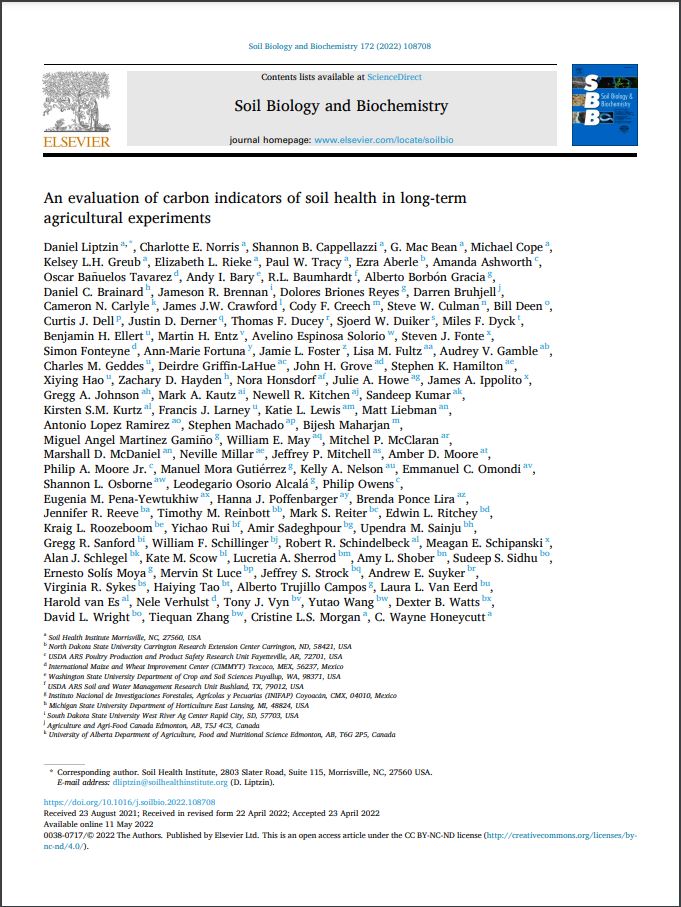Soil organic carbon (SOC) is closely tied to soil health. However, additional biological indicators may also provide insight about C dynamics and microbial activity. We used SOC and the other C indicators (potential C mineralization, permanganate oxidizable C, water extractable organic C, and β-glucosidase enzyme activity) from the North American Project to Evaluate Soil Health Measurements to examine the continental-scale drivers of these indicators, the relationships among indicators, and the effects of soil health practices on indicator values. All indicators had greater values at cooler temperatures, and most were greater with increased precipitation and clay content. The indicators were strongly correlated with each other at the site-level, with the strongest relationship between SOC and permanganate oxidizable C. The indicator values responded positively to decreased tillage, inclusion of cover crops, application of organic nutrients, and retention of crop residue, but not the number of harvested crops in a rotation. The effect of decreased tillage on the C indicators was generally greater at sites with higher precipitation. The magnitude and direction of the response to soil health practices was consistent across indicators within a site but measuring at least two indicators would provide additional confidence of the effects of management, especially for tillage. All C indicators responded to management, an essential criterion for evaluating soil health. Balancing the cost, sensitivity, interpretability, and availability at commercial labs, a 24-hr potential C mineralization assay could deliver the most benefit to measure in conjunction with SOC.

